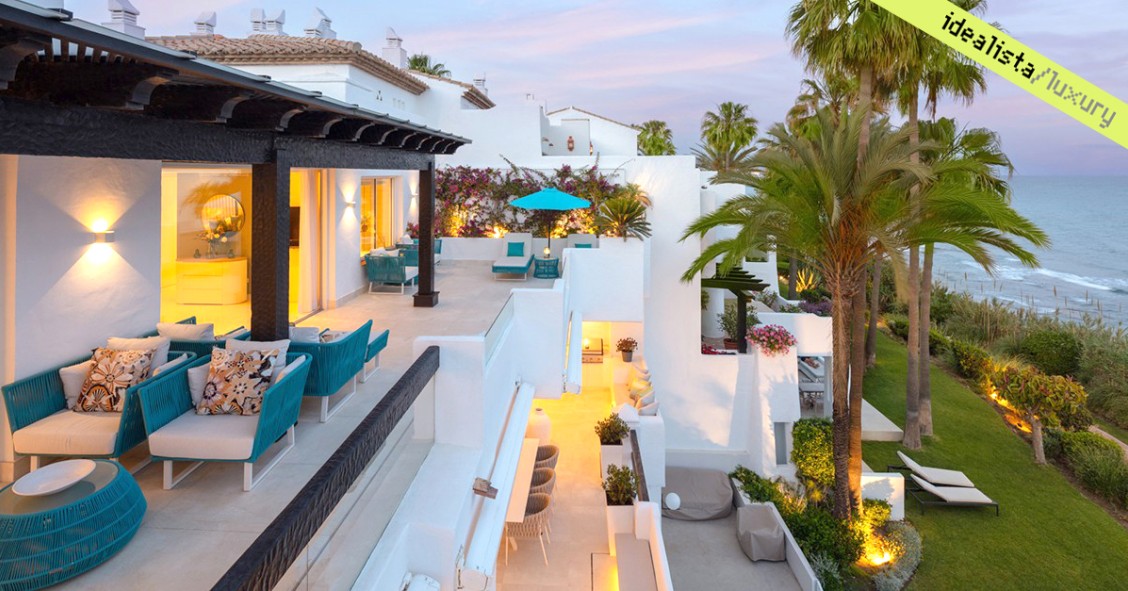The growth in the most expensive residential prices on the market reached 7.7% year-on-year in April. The rise in properties located in the 90th percentile of prices, or in other words the 10% of the most expensive homes, was higher than that recorded by the market as a whole, which increased by 6.9% year-on-year, according to the study published by idealista.
The most expensive homes in Spain
The province where the price of the 10% most expensive homes has risen most significantly is Santa Cruz de Tenerife, reaching 16.6%. In terms of price increases for the most exclusive properties, it is followed by the provinces of Madrid (13.7%), Las Palmas (12.3%), Murcia (11.5%), Granada and Alicante (9.3% in both cases). The increase reached 7.3% in Malaga province, while it stood at 2.6% in Barcelona province. The price of the highest-priced homes fell in only three provinces: Salamanca (-1.9%), Zamora (-1.5%) and Ourense (-0.8%).
As for the evolution of market prices as a whole, the most expensive homes rose the most in slightly more than half of the provinces (28 out of 50). The biggest difference is in Madrid, where the market grew by 7.4% while the 90th percentile market grew by 13.7%. It is followed by Lleida (4.8% of the market and 9.2% of the 90th percentile); Girona (4.4% and 8.4%, respectively) and Pontevedra (1.2% and 5%, respectively). In Barcelona province, the market price fell by 0.1%, while the most exclusive part of the market rose by 2.6%.
At the other end of the scale are the Balearic Islands, where 10% of the most expensive homes rose less than the market: housing went up by 11.6%, while those in the 90th percentile only grew by 7%. It is followed by Navarra (5% of the market and 1.1% of the 90th percentile); Huesca (10.9% and 7.4%, respectively) and Malaga (10.1% and 7.3%, respectively).
The price of luxury housing in the capitals
Madrid is the city where the most expensive homes have gone up the most, with a 17.4% price increase. It is followed by Malaga (16.9%), Teruel (15.3%), Santa Cruz de Tenerife (15.1%) and Santander (15%). Other cities with double-digit growth were Valencia (14.5%), San Sebastian (12.1%) and Alicante (11.8%). In Barcelona, the increase in this market segment stood at 7.5%. In contrast, there were five capitals where the price of 90th percentile homes fell: Pamplona (-2.3%), Zamora (-1.1%), Salamanca (-0.9%), Badajoz (-0.6%) and Vitoria (-0.2%).
As for the relationship with the rest of the market, the capital cities where the highest segment has become more expensive than the market itself are fewer than in the case of the provinces: only 15 cities. The biggest difference is again in Madrid with a market growth of 10.6%, which rises to 17.4% in the case of the 90th percentile. It is followed by Segovia (4% of the market compared to 9.4% of the 90th percentile) and San Sebastian (6.7% and 12.1%, respectively). Barcelona is in the same situation, where the market grew by 6.8% while the 90th percentile rose by 7.5%.
In the city of Huesca, on the other hand, the differences between the market and its highest segment are significant, as the market has risen by 13.8%, while properties in its 90th percentile have only risen by 1.5%. It is followed by Ávila (9.6% of the market and 2% of the 90th percentile), Toledo (8.4% and 1.4%, respectively), Logroño (7.6% and 1.1%, respectively) and Palma de Mallorca (9.8% and 3.7%, respectively).
Methodology
To carry out this study, the idealista team compared the price per square metre in April 2023 and 2024, using the same sample used in the idealista Report, but focusing on the 90th percentile of each market analysed.
Data compiled and analysed by idealista/data, idealista's proptech, which provides information for a professional audience to facilitate strategic decision-making in Spain, Italy and Portugal. It uses all the idealista database parameters in each country and other public and private data sources to offer valuation, investment, recruitment and market analysis services.

